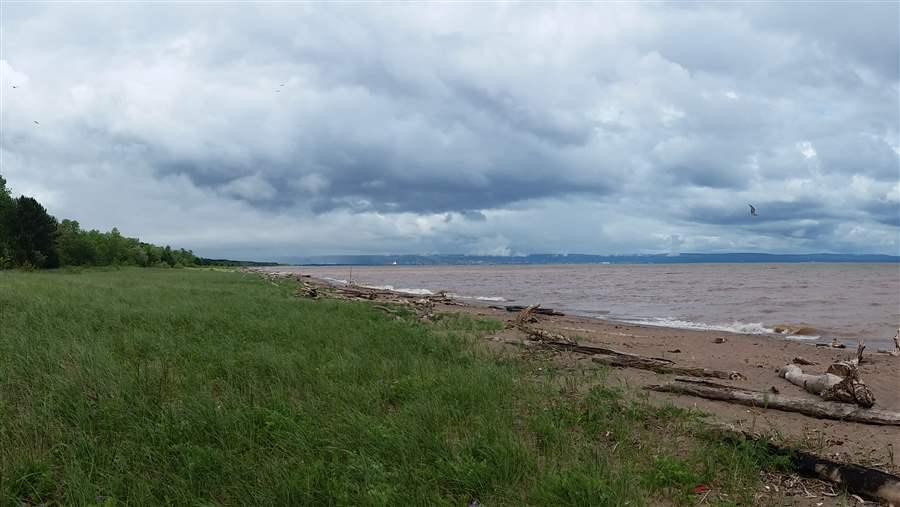Elected Officials From Across the Country Endorse National Living Shorelines Permit
Proposal encourages greater use of nature-based solutions
 © The Pew Charitable Trusts
© The Pew Charitable TrustsA living shoreline is part of a restoration project at Wisconsin Point in Superior, Wisconsin.
Last week, the U.S. Army Corps of Engineers closed its public comment period on a proposed new nationwide permit for living shorelines projects, a proven alternative to hard infrastructure such as seawalls and bulkheads, which use natural materials to reduce erosion, storm runoff, and habitat loss. A bipartisan group of elected officials, including members of Congress, state legislators, and local government representatives, expressed support for the permit during the comment period. Among them were:
- U.S. Representative Brendan Boyle (D-PA): “As a private citizen with a passion for environmental protection and [as] the representative of a congressional district that is home to numerous watersheds and miles of shoreline along the Delaware River, I write to voice my support for a Nationwide General Permit for Living Shorelines.”
- State Representative Chris Pringle (R-AL): “Living shorelines projects in Alabama have been extremely successful and have added value to our citizens’ property and our economy. Please consider giving the rest of the country the option to add value [to], protect, and strengthen their shorelines and economies.”
- State Representative Wayne Faircloth (R-TX): “I fully support Nationwide Permit provisions that will encourage and allow property owners to more easily construct living shorelines along their waterfront property as a preferred alternative to the traditional use of concrete bulkheads. … Healthy shorelines are an integral part [of] the Galveston County fishing industry, tourism appeal, and the Texas way of life.”
- State Representative Eric Genrich (D-WI): “The growing number of people and property along our shore, combined with the tough challenges of erosion prevention along the coasts, riverbanks, and lakefronts, has increasingly motivated property owners to build bank stabilizers like seawalls and bulkheads. Unfortunately, these methods can unintentionally damage and destroy shallow estuaries around them, in turn disrupting and eliminating wildlife habitat. This doesn’t just destroy part of Wisconsin’s natural allure and beauty but also commerce and tourism. ... As you begin the nationwide permit review process, please understand how important it is to reduce regulatory barriers that have created a disincentive for the adoption of living shorelines.”
- Town Manager Joseph Pierce, Holly Ridge, NC: “Living shorelines are a sensible and environmentally friendly alternative to the damaging bulkheads and seawalls that traditionally dot the coast to prevent against erosion. … The health of our shorelines [is] integral to sustainable coastal ecosystems and also to the coastal economy of states like North Carolina that depend on fisheries, tourism, and protection against natural disasters like hurricanes and tropical storms.”
Pew supports the proposed nationwide permit because it removes a barrier to implementing living shorelines projects: Current bank stabilization and aquatic ecosystem restoration permits do not cover most of these activities. The Corps is expected to announce the final rule in March 2017. Once in place, the permit will be a key step toward advancing nature-based solutions and will offer landowners a sustainable alternative to concrete structures. Pew submitted comments to the Corps on Aug. 1, 2016, in support of the new permit.
Laura Lightbody directs The Pew Charitable Trusts’ flood-prepared communities project.







